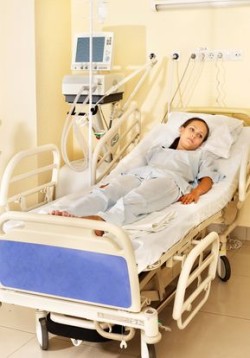Top Class Actions’s website and social media posts use affiliate links. If you make a purchase using such links, we may receive a commission, but it will not result in any additional charges to you. Please review our Affiliate Link Disclosure for more information.

Twenty-six of the 31 fluoroquinolone SJS/TEN cases were linked to the popular medication Cipro (ciprofloxacin), and one was caused by the oral ingestion of ofloxacin (Ocuflox or Floxin), a quinolone antibiotic commonly prescribed to treat middle ear and outer ear infections, according to a report published in the international peer-reviewed journal Acta Dermato-Venereologica, which focuses on clinical and experimental research in the field of dermatology and venereology.
A 2010 case study reported by doctors in the Department of Allergy and Clinical Immunology at South Korea’s University of Ulsan College of Medicine detailed the case of a 29-year-old woman who was treated with oral ofloxacin for four days after undergoing implantable contact lens surgery.
Ten days after she began taking the medication she began manifesting symptoms of Ofloxacin SJS/TEN, including a rash and blisters on her face, hands and feet and a slight erosion of the lips and mouth. The lesions spread rapidly throughout her body, eventually eroding 80 percent of her skin.
Doctors initially misdiagnosed the woman with hand, foot and mouth disease but after being transferred to the University of Ulsan allergy clinic she was properly diagnosed with TEN and placed in an intensive care burn unit, where she remained for a month and recovered without severe complications.
While that patient was young, women over age 60 who take ofloxacin are at the greatest risk of developing SJS or TEN, according to the results of a study involving 3,267 people who reported side effects when taking ofloxacin antibiotics.
What is SJS/TEN?
Stevens Johnson Syndrome is marked by flu-like symptoms that ultimately produce a potentially life-threatening skin disease manifested by a rash similar to a burn, open sores and skin peeling. A purplish rash spreads, resulting in painful blistering of the mucus membranes, eyes, nose, mouth, and genitals, sloughing off of skin in large patches, joint and muscle pain and a burning sensation all over the body.
With TEN, the top layer of skin (the epidermis) detaches from the body, especially the mucous membranes, such as the mouth, eyes, and genital areas.
Up to 40 percent of people who suffer TEN die from complications associated with the painful disease, compared with 5 to 15 percent of those with SJS. Survivors may experience lifelong health problems such as a secondary skin infection (cellulitis), sepsis (a blood infection), blindness, internal organ damage and permanent skin damage.
The prognosis varies with the severity of disease, but the overall six-week mortality rate for patients on the SJS/TEN spectrum is 23 percent, mostly due to acute complications such as severe fluid imbalances, infections, and respiratory failure, according to a 2014 University of Iowa Health Care Ophthalmology and Visual Sciences publication. Mortality rates are high even after the acute phase has passed. The one-year mortality rate is 34 percent.
Some 60 percent of survivors experience serious, long-term ocular complications, with corneal damage in the form of scarring or limbal stem cell failure being the most severe ocular outcome. Conjunctival scarring can also be a long-term concern, as is visual impairment. Since optical issues are common for patients with SJS and TEN, it is recommended that an ophthalmologist conduct an urgent evaluation.
There is no standard treatment for managing ophthalmic manifestations of SJS or TEN, a combination of topical corticosteroids and antibiotics are often used in mild cases of ocular involvement, while more severe cases may benefit from early surgical intervention.
Do YOU have a legal claim? Fill out the form on this page now for a free, immediate, and confidential case evaluation. The attorneys who work with Top Class Actions will contact you if you qualify to let you know if an individual lawsuit or class action lawsuit is best for you. [In general, quinolone lawsuits are filed individually by each plaintiff and are not class actions.] Hurry — statutes of limitations may apply.
ATTORNEY ADVERTISING
Top Class Actions is a Proud Member of the American Bar Association
LEGAL INFORMATION IS NOT LEGAL ADVICE
Top Class Actions Legal Statement
©2008 – 2024 Top Class Actions® LLC
Various Trademarks held by their respective owners
This website is not intended for viewing or usage by European Union citizens.
Get Help – It’s Free
Join a Free Quinolone Class Action Lawsuit Investigation
If you or someone you know took Cipro, Levaquin, Avelox or another quinolone antibiotic and were diagnosed with liver failure, Stevens Johnson Syndrome (SJS) or toxic epidermal necrolysis (TEN), you may have a legal claim. See if you qualify by submitting your information below for a free and confidential case review.
An attorney will contact you if you qualify to discuss the details of your potential case at no charge to you.
Oops! We could not locate your form.












